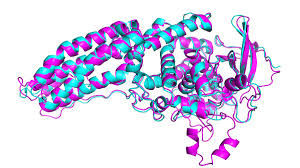Dec 01 2020
AI Mostly Solves Protein Folding
 I wasn’t planning on writing about artificial intelligence (AI) two days in a row, but I also can’t plan the news. I also couldn’t pass up this item – London-based AI company, DeepMind, has mostly solved the extremely difficult problem of protein folding. If you are not already familiar with this issue, this may not sound like a big deal, but it is. So first lets’ give some background on the problem itself.
I wasn’t planning on writing about artificial intelligence (AI) two days in a row, but I also can’t plan the news. I also couldn’t pass up this item – London-based AI company, DeepMind, has mostly solved the extremely difficult problem of protein folding. If you are not already familiar with this issue, this may not sound like a big deal, but it is. So first lets’ give some background on the problem itself.
Biology is largely about proteins. Proteins are what genes code for, they make up enzymes, receptors, structural building blocks, antibodies, the basic machinery of cells, and more. Yes, lipids and carbohydrates are critical as well, but these are largely chaperoned by proteins. Proteins determine whether a cell is a liver or heart cell, and largely whether an organism is a human or sea cucumber.
Proteins are comprised of a sequence of amino acids, from a repertoire of 20 different amino acids. The specific sequence of amino acids is what is determined by the GATC genetic code in DNA, with three-letter codes for each amino acid. But a protein is more than just a sequence of amino acids. By itself a long chain of amino acids is a polypeptide – it doesn’t become a protein until that long chain is folded into a unique three-dimensional shape. Predicting how a long chain of amino acids will fold into a precise shape is the protein folding problem.
This is more difficult than it may at first seem. Imagine a chain with each link one of 20 possible different shapes, and that chain can be hundreds or even thousands of links long (titin is the largest known protein; its human variant consists of 34,351 amino acids). The number of possible ways to fold the protein gets magnified with each additional link. The resulting possibilities is staggering – too much for even the most powerful computer to crunch through. Determining how a sequence of amino acids actually folds is therefore determined mostly by direct laboratory study, using techniques such as X-ray crystallography and NMR spectroscopy. But this takes a long time – years for the largest proteins.






